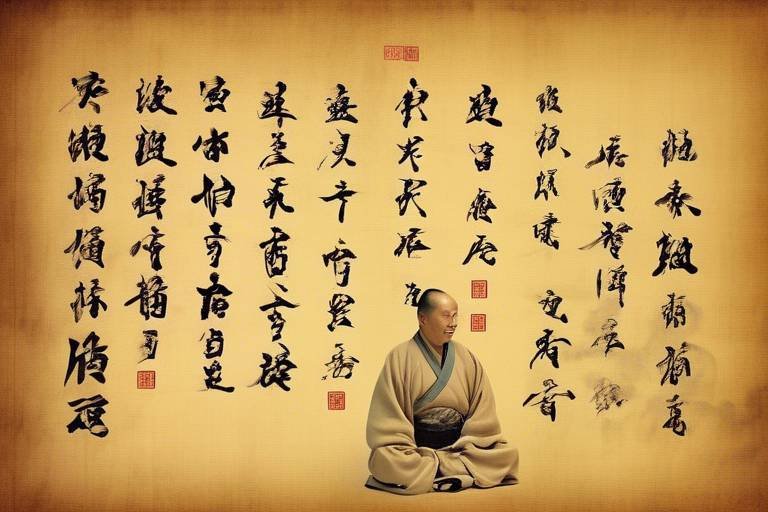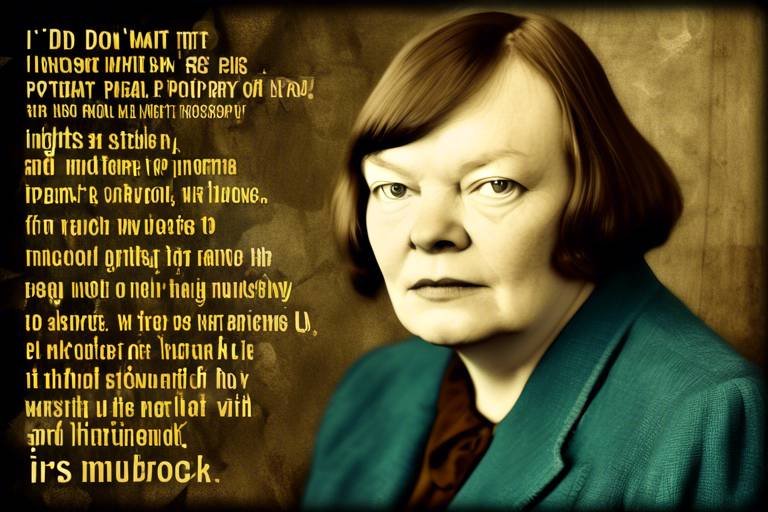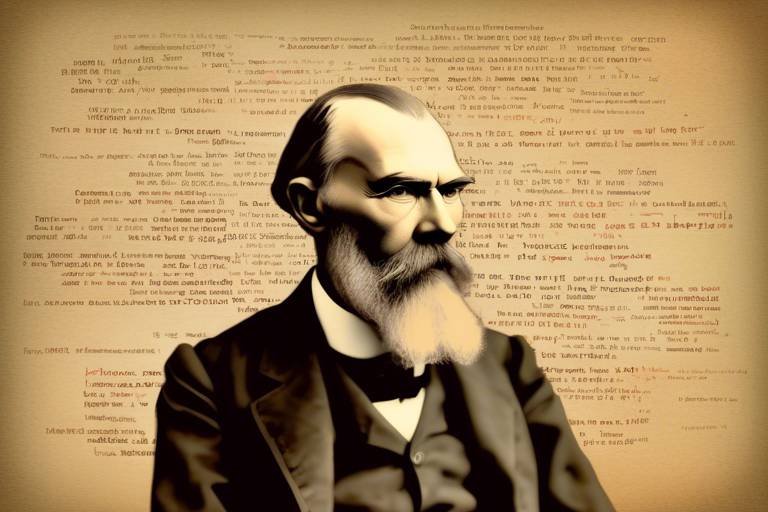Cultural Materialism - Raymond Williams' Contribution to Marxist Philosophy
This article explores Raymond Williams' influence on cultural materialism and its intersection with Marxist philosophy, examining his key concepts and their implications for understanding culture and society.
Cultural materialism, as developed by Raymond Williams, emphasizes the material conditions of life as primary influences on cultural practices. This theoretical framework suggests that our cultural expressions are deeply intertwined with the economic, social, and historical contexts in which they arise. By prioritizing material conditions, Williams challenges the notion of culture as merely a reflection of elite or dominant ideologies. Instead, he posits that culture is shaped by the everyday experiences and struggles of people, making it a living, breathing entity that evolves with society. This perspective invites us to consider how factors such as class, labor, and economic systems affect the way culture is created and understood.
Raymond Williams introduced several key concepts that are essential for grasping the nuances of cultural materialism. Among these are culture, structure of feeling, and selective tradition. Each of these ideas plays a crucial role in how we interpret the relationship between culture and society. For instance, Williams viewed culture not as a static entity but as a dynamic process influenced by social and economic factors. This means that culture is constantly being reshaped by the interactions and experiences of individuals within their material contexts.
Williams' view of culture as a process rather than a fixed product reshapes our understanding of cultural production and consumption. He argued that culture is not simply about the artifacts we create, but also about the practices and meanings that emerge from our daily lives. This perspective allows us to see culture as a site of struggle, where different social groups negotiate their identities and values. For example, think of culture as a river: it flows and changes course based on the landscapes it encounters. Just like a river, culture is influenced by the material conditions surrounding it, which can alter its path and shape its character.
Language plays a crucial role in Williams' cultural materialism, acting as a medium through which culture is expressed and constructed. He believed that language is not just a tool for communication, but also a powerful force that shapes our understanding of reality. The interplay between language and material conditions is significant; for instance, the words we use to describe our experiences can reinforce or challenge existing power structures. In this way, language becomes a site where cultural meanings are negotiated and contested. As we navigate through our social environments, the language we adopt reflects our material realities and influences our cultural narratives.
The notion of structures of feeling highlights the emotional and experiential dimensions of culture. Williams argued that these structures represent the shared values, beliefs, and sentiments of a particular time and place, often existing beneath the surface of dominant ideologies. This concept allows us to explore how cultural forms resonate with the lived experiences of individuals, providing insight into the emotional undercurrents that shape societal relationships. For example, consider how music can evoke feelings of nostalgia or rebellion; these emotional responses are deeply rooted in the material conditions and historical contexts from which they emerge.
Williams' idea of selective tradition addresses how certain cultural forms are preserved or marginalized over time. This concept is crucial for understanding cultural evolution and resistance. Selective tradition suggests that not all cultural expressions are given equal weight; some are celebrated and maintained, while others are forgotten or suppressed. This process of selection is often influenced by power dynamics within society, leading to the prominence of certain narratives over others. By examining which cultural forms are prioritized, we gain insight into the values and beliefs that dominate a particular era.
Despite its contributions, cultural materialism has faced critiques, particularly regarding its emphasis on material conditions over individual agency. Critics argue that this focus can overlook the role of individuals in shaping culture and can lead to deterministic interpretations of cultural phenomena. This section discusses these challenges and the ongoing debates within Marxist philosophy, highlighting the tension between structural influences and personal agency.
In response to critiques, proponents of cultural materialism have refined their arguments to incorporate aspects of agency and subjectivity. They emphasize that while material conditions significantly influence culture, individuals also play an active role in interpreting and reshaping these conditions. This subsection examines these adaptations within the framework of Williams' theories, illustrating how cultural materialism can accommodate a more nuanced understanding of the interplay between structure and agency.
The relevance of cultural materialism continues to resonate in contemporary cultural studies. Williams' ideas inform current debates on culture, power, and identity in a globalized world. As we navigate through complex cultural landscapes, understanding the material conditions that shape our experiences becomes increasingly vital. This section explores how Williams' concepts can help us make sense of the challenges and opportunities presented by globalization, digital culture, and shifting power dynamics.
- What is cultural materialism? Cultural materialism is a theoretical framework that emphasizes the role of material conditions in shaping cultural practices and beliefs.
- Who is Raymond Williams? Raymond Williams was a Welsh cultural critic and theorist known for his contributions to cultural studies and Marxist philosophy.
- How does cultural materialism differ from traditional Marxism? Cultural materialism focuses more on cultural practices and meanings, while traditional Marxism often emphasizes economic structures and class relations.
- What are 'structures of feeling'? 'Structures of feeling' refers to the shared emotional experiences and values of a particular time and place, often reflecting the lived realities of individuals.

[The Foundations of Cultural Materialism]
Cultural materialism, as envisioned by Raymond Williams, serves as a fascinating lens through which we can analyze the intricate tapestry of culture and society. At its core, this theoretical framework posits that the material conditions of life—such as economic structures, social relations, and technological advancements—are the primary influences shaping cultural practices. Imagine culture as a tree, with its roots deeply embedded in the soil of material reality; the stronger and more nourished the roots, the more vibrant and diverse the branches of culture can grow.
Williams challenges the notion that culture is merely a reflection of elite ideals or abstract philosophies. Instead, he emphasizes that culture is deeply intertwined with the lived experiences of individuals and communities. This perspective invites us to consider how our everyday realities—our jobs, our environments, and our social interactions—inform our cultural expressions. For instance, consider the impact of industrialization on the working class; it not only transformed economic conditions but also reshaped cultural identities, values, and practices.
In exploring the foundations of cultural materialism, we can identify several key principles that Williams advocated:
- Material Conditions Matter: The economic and social structures in which people live significantly influence their cultural practices.
- Culture as a Dynamic Process: Culture is not static; it evolves in response to changing material conditions and societal needs.
- Interconnectedness: The relationship between culture and material conditions is reciprocal; culture can also influence economic and social structures.
By grounding culture in material conditions, Williams opens up a dialogue about the role of power dynamics in shaping cultural narratives. He encourages us to critically examine who gets to tell the stories that define our cultural landscape and whose voices are marginalized. This inquiry leads us to question the very foundations of cultural authority and the ways in which cultural forms are produced, disseminated, and consumed.
Furthermore, Williams' cultural materialism invites us to consider the implications of technology on culture. As new technologies emerge, they alter not only the means of cultural production but also the ways in which we engage with culture. For example, the rise of digital media has transformed how we consume art, music, and literature, leading to a democratization of cultural access while simultaneously raising questions about authenticity and value.
In summary, the foundations of cultural materialism as articulated by Raymond Williams provide a robust framework for understanding the interplay between culture and material conditions. By recognizing that culture is a living, breathing entity shaped by the realities of life, we can better appreciate the complexities of human experience and the social fabric that binds us together.
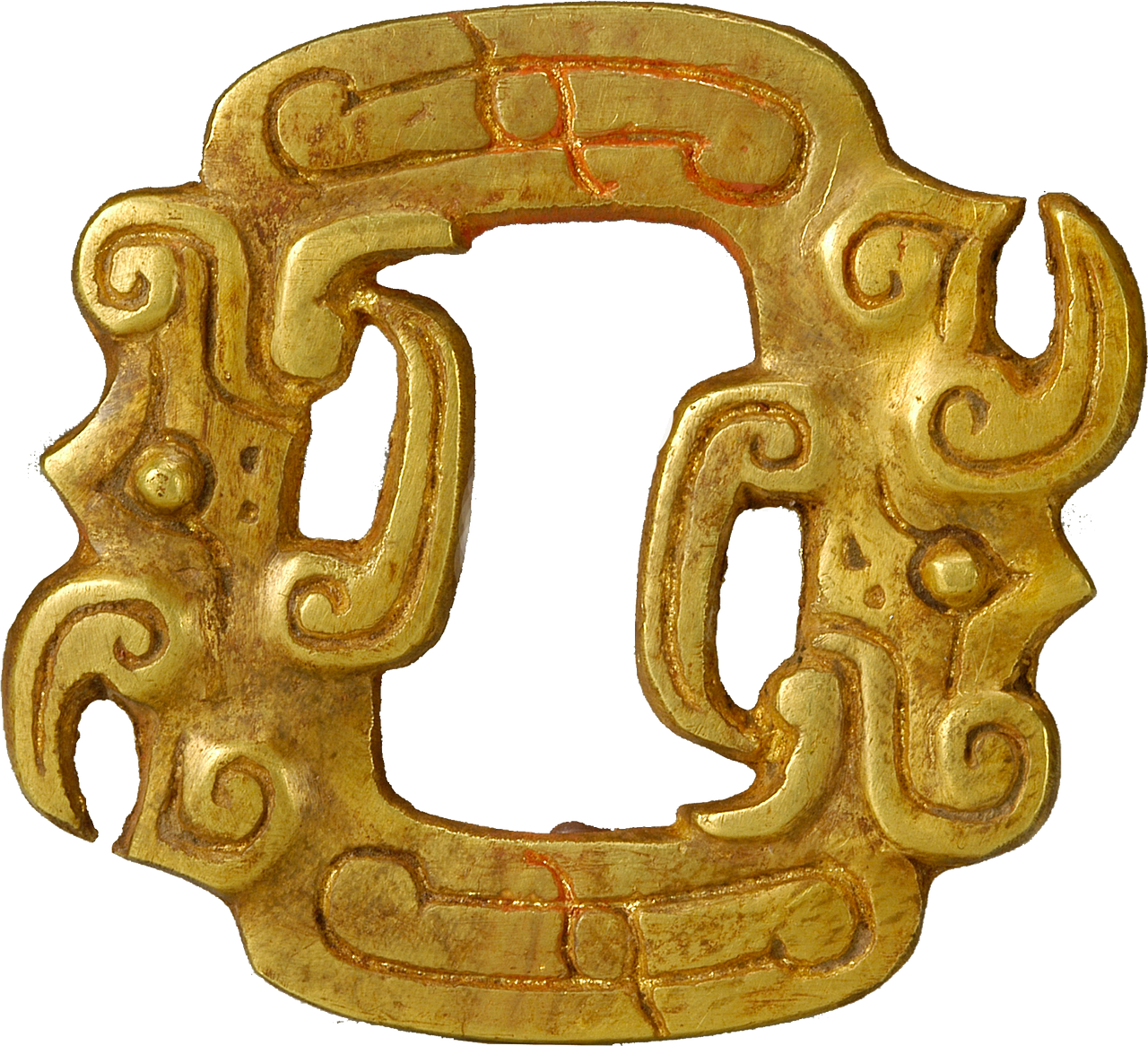
[Williams' Key Concepts]
Raymond Williams, a pivotal figure in the development of cultural materialism, introduced several key concepts that have significantly shaped our understanding of culture and its relationship with society. These concepts are not just academic jargon; they are essential tools for analyzing how culture operates within the fabric of social life. Among the most influential ideas are culture, structures of feeling, and selective tradition. Each of these concepts offers a unique lens through which we can examine the interplay between cultural practices and material conditions.
First and foremost, Williams redefined the notion of culture. Traditionally viewed as a static collection of artifacts and practices, Williams argued that culture is a dynamically evolving process. This perspective shifts our understanding from seeing culture as merely what we consume—like art or literature—to recognizing it as an ongoing process shaped by social interactions, economic conditions, and historical contexts. Culture, in this sense, becomes a living entity, constantly influenced by the world around it. Imagine culture as a river, flowing and changing course based on the landscapes it encounters, rather than a stagnant pond.
Another critical concept introduced by Williams is the structure of feeling. This idea encapsulates the emotional and experiential dimensions of culture, emphasizing that culture is not just about what we think but also about how we feel. Structures of feeling are the shared experiences and emotional responses that arise from specific historical and social contexts. For instance, the collective feelings experienced during a political movement can shape cultural expressions like music, literature, and art. This concept highlights how deeply intertwined our emotions are with cultural production, suggesting that understanding culture requires us to explore the emotional landscapes of society.
Lastly, the idea of selective tradition plays a crucial role in Williams' framework. This concept addresses how certain cultural forms are preserved while others are marginalized or forgotten over time. Selective tradition is not merely about what is remembered; it's about who gets to decide what is worthy of preservation. For example, consider how certain literary works are celebrated in educational curricula while others are overlooked. This selective process reflects broader societal values and power dynamics, raising important questions about representation and cultural memory. It’s like a museum curator choosing which artifacts to display while others remain hidden in storage—what gets shown tells us a lot about the society that curates it.
In summary, Williams' key concepts of culture, structures of feeling, and selective tradition provide invaluable insights into the complex relationship between culture and society. They encourage us to think critically about how cultural practices are shaped by material conditions and how they, in turn, influence social realities. By embracing these ideas, we can better understand the cultural dynamics that define our everyday lives and the broader societal structures in which we exist.
- What is cultural materialism? Cultural materialism is a theoretical framework that emphasizes the importance of material conditions in shaping cultural practices and social relations.
- Who is Raymond Williams? Raymond Williams was a Welsh cultural critic and theorist known for his contributions to cultural studies and Marxist philosophy.
- What does 'structure of feeling' mean? 'Structure of feeling' refers to the shared emotional experiences and responses that characterize a particular historical period or social context.
- Why is selective tradition important? Selective tradition is important because it highlights how certain cultural forms are preserved while others are marginalized, reflecting societal values and power dynamics.

culture,
This article explores Raymond Williams' influence on cultural materialism and its intersection with Marxist philosophy, examining his key concepts and their implications for understanding culture and society.
Cultural materialism, as developed by Raymond Williams, emphasizes the material conditions of life as primary influences on cultural practices. This section delves into the core principles that underlie this theoretical framework.
Raymond Williams introduced several key concepts such as culture, structure of feeling, and selective tradition. This section will elaborate on these ideas and their significance in the context of cultural materialism.
Williams viewed culture not as a static entity but as a dynamic process influenced by social and economic factors. This subsection discusses how this perspective reshapes our understanding of cultural production and consumption.
Language plays a crucial role in Williams' cultural materialism, acting as a medium through which culture is expressed and constructed. This section examines the interplay between language and material conditions.
The notion of structures of feeling highlights the emotional and experiential dimensions of culture. This subsection explores how these structures reflect and shape societal values and relationships.
Williams' idea of selective tradition addresses how certain cultural forms are preserved or marginalized over time. This section analyzes the implications for understanding cultural evolution and resistance.
Despite its contributions, cultural materialism has faced critiques, particularly regarding its emphasis on material conditions over individual agency. This section discusses these challenges and the ongoing debates within Marxist philosophy.
In response to critiques, proponents of cultural materialism have refined their arguments to incorporate aspects of agency and subjectivity. This subsection examines these adaptations within the framework of Williams' theories.
The relevance of cultural materialism continues to resonate in contemporary cultural studies. This section explores how Williams' ideas inform current debates on culture, power, and identity in a globalized world.
When we think about culture, it's easy to envision a collection of artifacts, traditions, and practices that define a group of people. But, as Raymond Williams would argue, culture is far more than just a static display of customs. It's a living, breathing process that reflects the dynamic interplay between society and its material conditions. Imagine culture as a river, constantly flowing and reshaping its banks, influenced by the landscape it traverses. This perspective allows us to see culture not as a mere backdrop to human activity but as an active participant in shaping our lives.
At its core, culture encompasses the beliefs, values, and norms that guide our interactions and understandings of the world. It is shaped by various factors, including historical context, economic conditions, and social structures. For instance, the way we celebrate holidays, the music we listen to, and even the language we use are all influenced by the material realities of our lives. In this sense, culture is a reflection of our lived experiences and the environments in which we find ourselves.
Williams introduced the idea that culture is not only about high art or intellectual pursuits; it includes everyday practices and experiences that people engage in. This means that culture is democratic and accessible, existing in the mundane as much as in the extraordinary. It invites us to consider how cultural expressions can both reinforce and challenge the status quo, creating a space for resistance and change.
To further understand culture through Williams' lens, we can break it down into several interconnected dimensions:
- Material Conditions: The economic and social structures that shape cultural practices.
- Social Relations: The interactions and relationships that influence cultural expressions.
- Historical Context: The past events and narratives that inform contemporary cultural practices.
- Everyday Experiences: The mundane activities that contribute to the broader cultural landscape.
By recognizing these dimensions, we can appreciate the complexity of culture as a process rather than a fixed entity. This understanding encourages us to engage critically with cultural practices and consider how they reflect and shape our identities within society.
- What is cultural materialism?
Cultural materialism is a theoretical framework that emphasizes the material conditions of life as primary influences on cultural practices and beliefs. - How does Raymond Williams define culture?
Williams defines culture as a dynamic process that encompasses the beliefs, values, and everyday practices of a society, shaped by social and economic factors. - What are the key concepts introduced by Williams?
Key concepts introduced by Williams include culture, structures of feeling, and selective tradition, all of which contribute to understanding cultural evolution and resistance. - Why is language important in cultural materialism?
Language is crucial as it serves as the medium through which culture is expressed, constructed, and communicated, reflecting the material conditions of society.
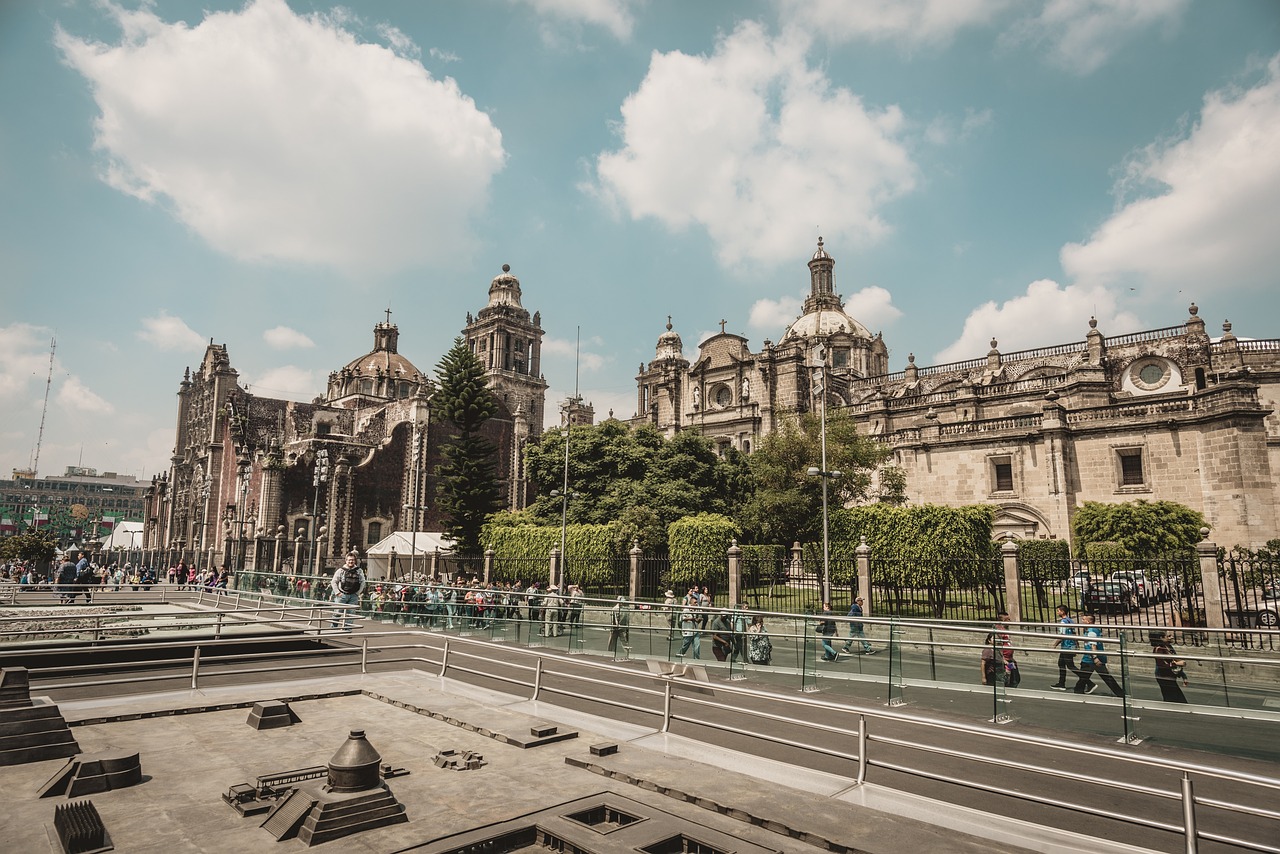
This article explores Raymond Williams' influence on cultural materialism and its intersection with Marxist philosophy, examining his key concepts and their implications for understanding culture and society.
Cultural materialism, as developed by Raymond Williams, emphasizes the material conditions of life as primary influences on cultural practices. At its core, this theoretical framework posits that culture is not merely an abstract phenomenon but is deeply intertwined with the economic and social realities of a given society. Williams argued that to understand culture, one must first examine the material circumstances that shape it. This perspective challenges the notion of culture as a separate, elite domain, suggesting instead that it is a living, breathing entity that evolves with the changing material conditions of life.
Raymond Williams introduced several key concepts such as culture, structure of feeling, and selective tradition. These ideas are crucial for understanding how cultural materialism functions within the broader context of Marxist philosophy. Williams viewed culture as a process rather than a product, emphasizing its dynamic nature. This means that culture is constantly being shaped and reshaped by various forces, including economic conditions, social relations, and historical contexts. By exploring these concepts, we can gain deeper insights into the ways culture influences and is influenced by the world around us.
Williams viewed culture not as a static entity but as a dynamic process influenced by social and economic factors. This perspective reshapes our understanding of cultural production and consumption. Instead of seeing culture as a finished product, we should view it as a continuous flow of meanings and practices that are always in flux. For instance, think of culture like a river: it flows, changes course, and adapts to the landscape it traverses. This understanding encourages us to look at the interactions between different cultural forms and the material conditions that give rise to them, allowing for a more nuanced view of cultural evolution.
Language plays a crucial role in Williams' cultural materialism, acting as a medium through which culture is expressed and constructed. Language is not just a tool for communication; it is a vital component of cultural identity and social relations. Williams believed that the way we use language reflects our material circumstances and shapes our perceptions of the world. For example, the language of the working class often incorporates specific terms and phrases that resonate with their lived experiences, creating a unique cultural identity. This interplay between language and material conditions highlights the importance of understanding how language can both reflect and influence cultural practices.
The notion of structures of feeling highlights the emotional and experiential dimensions of culture. Williams introduced this concept to capture the collective emotions and feelings that arise within a particular social context. These structures reflect and shape societal values and relationships, serving as a bridge between individual experiences and broader cultural narratives. For instance, the feelings associated with a particular social movement can create a shared sense of identity among its participants, influencing how they engage with the world around them. By understanding structures of feeling, we can better appreciate the emotional undercurrents that drive cultural change.
Williams' idea of selective tradition addresses how certain cultural forms are preserved or marginalized over time. This concept is crucial for analyzing the implications of cultural evolution and resistance. Selective tradition suggests that not all cultural practices are equally valued; some are celebrated and preserved, while others are forgotten or dismissed. This process often reflects the power dynamics within society, where dominant groups may dictate what is considered 'worthy' of preservation. By examining selective tradition, we can uncover the mechanisms of cultural change and resistance, revealing how marginalized voices can challenge prevailing narratives.
Despite its contributions, cultural materialism has faced critiques, particularly regarding its emphasis on material conditions over individual agency. Critics argue that this focus can lead to a deterministic view of culture, where individual choices and actions are downplayed. This section discusses these challenges and the ongoing debates within Marxist philosophy, highlighting the need for a more balanced approach that recognizes the interplay between material conditions and individual agency.
In response to critiques, proponents of cultural materialism have refined their arguments to incorporate aspects of agency and subjectivity. This subsection examines these adaptations within the framework of Williams' theories, suggesting that while material conditions play a significant role, individual actions and cultural expressions are equally important in shaping cultural landscapes.
The relevance of cultural materialism continues to resonate in contemporary cultural studies. This section explores how Williams' ideas inform current debates on culture, power, and identity in a globalized world. As we navigate the complexities of modern society, understanding the material conditions that influence cultural practices remains essential for addressing issues of inequality and representation.
- What is cultural materialism? - Cultural materialism is a theoretical framework that emphasizes the relationship between material conditions and cultural practices.
- Who is Raymond Williams? - Raymond Williams was a British cultural critic and theorist known for his contributions to cultural studies and Marxist philosophy.
- What are 'structures of feeling'? - Structures of feeling refer to the shared emotional experiences and values within a specific cultural context.
- How does cultural materialism apply to contemporary issues? - Cultural materialism helps analyze current cultural phenomena by examining the material conditions that shape them, informing debates on power and identity.

structure of feeling,
This article explores Raymond Williams' influence on cultural materialism and its intersection with Marxist philosophy, examining his key concepts and their implications for understanding culture and society.
Cultural materialism, as developed by Raymond Williams, emphasizes the material conditions of life as primary influences on cultural practices. This section delves into the core principles that underlie this theoretical framework.
Raymond Williams introduced several key concepts such as culture, structure of feeling, and selective tradition. This section will elaborate on these ideas and their significance in the context of cultural materialism.
Williams viewed culture not as a static entity but as a dynamic process influenced by social and economic factors. This subsection discusses how this perspective reshapes our understanding of cultural production and consumption.
Language plays a crucial role in Williams' cultural materialism, acting as a medium through which culture is expressed and constructed. This section examines the interplay between language and material conditions.
The notion of structures of feeling highlights the emotional and experiential dimensions of culture. Williams argues that these structures represent the shared, lived experiences of individuals within a society, capturing the nuances of their feelings and perceptions. Unlike fixed ideas or explicit cultural products, structures of feeling are more fluid and often reflect the underlying tensions and contradictions of a given social context.
To illustrate, consider how the youth culture of the 1960s was shaped by various social movements, economic conditions, and historical events. The feelings of rebellion, hope, and disillusionment that permeated this era were not merely reactions to external stimuli but were deeply embedded in the collective consciousness of the time. Williams believed that these emotional undercurrents could be traced back to the material conditions of life, including class struggles, economic disparities, and political upheavals.
Moreover, structures of feeling serve as a lens through which we can understand cultural change. They reveal how individuals and groups navigate their realities, often leading to new forms of expression and resistance. For instance, the rise of digital culture has created new structures of feeling, reflecting the complexities of identity, community, and belonging in an increasingly interconnected world.
In summary, structures of feeling are essential for grasping the emotional landscape of any culture. They allow us to see beyond mere cultural artifacts and engage with the deeper, often unarticulated sentiments that drive social change and cultural evolution.
Williams' idea of selective tradition addresses how certain cultural forms are preserved or marginalized over time. This section analyzes the implications for understanding cultural evolution and resistance.
Despite its contributions, cultural materialism has faced critiques, particularly regarding its emphasis on material conditions over individual agency. This section discusses these challenges and the ongoing debates within Marxist philosophy.
In response to critiques, proponents of cultural materialism have refined their arguments to incorporate aspects of agency and subjectivity. This subsection examines these adaptations within the framework of Williams' theories.
The relevance of cultural materialism continues to resonate in contemporary cultural studies. This section explores how Williams' ideas inform current debates on culture, power, and identity in a globalized world.
- What is cultural materialism? Cultural materialism is a theoretical framework that emphasizes the role of material conditions in shaping cultural practices and beliefs.
- Who is Raymond Williams? Raymond Williams was a British cultural theorist and literary critic known for his contributions to cultural studies and Marxist philosophy.
- What are structures of feeling? Structures of feeling refer to the shared emotional experiences and perceptions within a society, reflecting the complexities of social life.
- How does cultural materialism apply today? Cultural materialism remains relevant in analyzing contemporary issues related to culture, power dynamics, and identity in a globalized context.

and
This article explores Raymond Williams' influence on cultural materialism and its intersection with Marxist philosophy, examining his key concepts and their implications for understanding culture and society.
Cultural materialism, as developed by Raymond Williams, emphasizes the material conditions of life as primary influences on cultural practices. This theoretical framework asserts that the way we live—our economic, social, and political circumstances—shapes our cultural expressions. Williams believed that culture is not merely a reflection of these conditions but is actively shaped by them. This perspective invites us to consider how our everyday lives, including our labor, consumption, and social interactions, inform the cultural artifacts we produce and engage with. It challenges the notion that culture exists in a vacuum, instead positioning it as a living, breathing entity intertwined with the fabric of society.
Raymond Williams introduced several key concepts such as culture, structure of feeling, and selective tradition. Each of these ideas plays a crucial role in understanding cultural materialism. Culture, for Williams, is not a fixed set of values or practices; rather, it is a dynamic process that evolves alongside social and economic changes. The concept of 'structure of feeling' highlights the emotional and experiential dimensions of culture, illuminating how feelings and perceptions shape our understanding of the world. Selective tradition, on the other hand, addresses the ways in which certain cultural forms are preserved or marginalized over time, revealing the power dynamics at play in cultural evolution.
Williams viewed culture not as a static entity but as a dynamic process influenced by social and economic factors. This perspective reshapes our understanding of cultural production and consumption by emphasizing that culture is continuously in flux, adapting to the changing conditions of life. Just like a river that carves its path through the landscape, culture flows and transforms, influenced by the rocks and soil—our material conditions. This analogy helps us grasp that culture is not merely a product of history; it is an active participant in shaping our experiences and identities.
Language plays a crucial role in Williams' cultural materialism, acting as a medium through which culture is expressed and constructed. It serves as both a tool and a site of struggle, where meanings are negotiated and contested. Language allows us to articulate our experiences, but it is also shaped by the material conditions of our lives. For instance, the way we speak can reflect our social class, regional identity, and cultural background, demonstrating the intricate link between language and material circumstances. This interplay highlights how language is not just a passive vehicle for communication; it actively shapes our perceptions of reality and our interactions with others.
The notion of structures of feeling highlights the emotional and experiential dimensions of culture. Williams argued that these structures reflect the lived experiences of individuals and groups, capturing the nuances of everyday life that are often overlooked. They encompass the shared values, beliefs, and emotions that bind communities together, providing a lens through which we can understand societal values and relationships. By examining these structures, we can gain insight into how cultural practices are informed by collective feelings and experiences, revealing the deeper currents that shape our social world.
Williams' idea of selective tradition addresses how certain cultural forms are preserved or marginalized over time. This concept invites us to consider why some cultural elements endure while others fade into obscurity. It raises important questions about power and representation: who gets to decide what is valued in our cultural heritage? This analysis is crucial for understanding cultural evolution and resistance, as it reveals the mechanisms through which certain narratives are prioritized over others. By engaging with selective tradition, we can better appreciate the complexities of cultural identity and the ongoing struggles for recognition and representation.
Despite its contributions, cultural materialism has faced critiques, particularly regarding its emphasis on material conditions over individual agency. Critics argue that this focus can lead to a deterministic view of culture, where individuals are seen as mere products of their environment. This section discusses these challenges and the ongoing debates within Marxist philosophy, highlighting the tensions between structure and agency in the study of culture.
In response to critiques, proponents of cultural materialism have refined their arguments to incorporate aspects of agency and subjectivity. They argue that while material conditions play a significant role in shaping culture, individuals are not powerless; rather, they actively engage with and negotiate these conditions. This subsection examines these adaptations within the framework of Williams' theories, demonstrating how cultural materialism can account for both the constraints and possibilities of cultural production.
The relevance of cultural materialism continues to resonate in contemporary cultural studies. Williams' ideas inform current debates on culture, power, and identity in a globalized world. As we navigate the complexities of modern life, cultural materialism offers valuable insights into the interplay between material conditions and cultural expressions, encouraging us to critically examine the forces that shape our cultural landscape.
- What is cultural materialism? Cultural materialism is a theoretical framework that emphasizes the influence of material conditions on cultural practices and expressions.
- Who is Raymond Williams? Raymond Williams was a Welsh cultural theorist, literary critic, and socialist thinker known for his contributions to cultural studies and Marxist philosophy.
- What are the key concepts of cultural materialism? Key concepts include culture as a process, structures of feeling, and selective tradition, each highlighting different aspects of the relationship between culture and material conditions.
- How does cultural materialism relate to contemporary issues? Cultural materialism remains relevant in discussions about identity, power, and cultural change in today's globalized society.

selective tradition.
Raymond Williams' concept of selective tradition is a fascinating lens through which we can examine the dynamics of culture and its evolution over time. At its core, selective tradition refers to the process by which certain cultural forms, practices, and narratives are deliberately preserved, celebrated, or even canonized, while others are marginalized or forgotten. This selective process is not random; rather, it is influenced by social, political, and economic forces that dictate which voices are amplified and which are silenced.
Imagine a vast library filled with countless books, each representing a different cultural narrative. Some books are prominently displayed, their covers bright and inviting, while others are tucked away in dusty corners, their stories largely unknown. This metaphor illustrates how selective tradition operates—certain narratives gain prominence due to their alignment with prevailing power structures, while others fade into obscurity. Williams argued that this selection process is crucial for understanding how culture evolves and how power dynamics shape our collective memory.
The implications of selective tradition are profound. It raises questions about whose stories are told and whose are left out. For instance, consider the difference between mainstream historical narratives that often highlight the achievements of dominant groups versus those that focus on marginalized communities. The latter may be overshadowed, despite their significant contributions, leading to a skewed understanding of cultural heritage.
Moreover, selective tradition is not merely a historical phenomenon; it is an ongoing process. In contemporary society, we see this in the way certain cultural trends gain traction while others are dismissed. For example, the resurgence of interest in indigenous cultures and practices can be seen as a challenge to the selective traditions of the past, which often privileged Western narratives. This ongoing negotiation between preservation and innovation is essential for understanding cultural change.
To further illustrate the concept, we can categorize the factors influencing selective tradition into a simple table:
| Factor | Description |
|---|---|
| Power Dynamics | Who holds power in society influences which traditions are preserved. |
| Economic Conditions | Resources available can dictate which cultural forms are supported. |
| Social Movements | Grassroots efforts can challenge existing traditions and promote new narratives. |
| Technological Advances | New media can help revive or redefine cultural practices. |
In conclusion, Williams' concept of selective tradition provides a crucial framework for understanding the complexities of cultural evolution. It invites us to reflect on the narratives we choose to celebrate and those we neglect, prompting a deeper inquiry into the values and power structures that shape our cultural landscape. As we navigate the ever-changing tides of culture, recognizing the implications of selective tradition can empower us to advocate for a more inclusive and representative cultural dialogue.
- What is selective tradition?
Selective tradition refers to the process through which certain cultural forms and narratives are preserved while others are marginalized or forgotten, influenced by social, political, and economic factors.
- Why is selective tradition important?
It helps us understand how cultural narratives are shaped by power dynamics and influences our collective memory and identity.
- How does selective tradition affect contemporary culture?
It influences which cultural trends gain popularity and recognition, often reflecting existing societal values and power structures.

This section will elaborate on these ideas and their significance in the context of cultural materialism.
Cultural materialism, as developed by Raymond Williams, emphasizes the material conditions of life as primary influences on cultural practices. This section delves into the core principles that underlie this theoretical framework.
Raymond Williams introduced several key concepts such as culture, structure of feeling, and selective tradition. This section will elaborate on these ideas and their significance in the context of cultural materialism.
Williams viewed culture not as a static entity but as a dynamic process influenced by social and economic factors. This subsection discusses how this perspective reshapes our understanding of cultural production and consumption.
Language plays a crucial role in Williams' cultural materialism, acting as a medium through which culture is expressed and constructed. This section examines the interplay between language and material conditions.
The notion of structures of feeling highlights the emotional and experiential dimensions of culture. This subsection explores how these structures reflect and shape societal values and relationships.
Williams' idea of selective tradition addresses how certain cultural forms are preserved or marginalized over time. This section analyzes the implications for understanding cultural evolution and resistance.
Despite its contributions, cultural materialism has faced critiques, particularly regarding its emphasis on material conditions over individual agency. This section discusses these challenges and the ongoing debates within Marxist philosophy.
In response to critiques, proponents of cultural materialism have refined their arguments to incorporate aspects of agency and subjectivity. This subsection examines these adaptations within the framework of Williams' theories.
The relevance of cultural materialism continues to resonate in contemporary cultural studies. This section explores how Williams' ideas inform current debates on culture, power, and identity in a globalized world.
- What is cultural materialism? Cultural materialism is a theoretical framework that emphasizes the material conditions of life as primary influences on cultural practices.
- Who is Raymond Williams? Raymond Williams was a British cultural critic and theorist whose work significantly influenced cultural studies and Marxist philosophy.
- What are the key concepts of Williams' cultural materialism? The key concepts include culture as a process, structures of feeling, and selective tradition.
- How does cultural materialism relate to Marxist philosophy? Cultural materialism intersects with Marxist philosophy by focusing on the material conditions that shape culture, emphasizing the importance of socio-economic factors in understanding cultural production.

[Culture as a Process]
Raymond Williams revolutionized our understanding of culture by framing it as a dynamically evolving process rather than a fixed entity. Imagine culture as a flowing river, constantly shaped by the rocks and landscapes around it, rather than a stagnant pond. This perspective emphasizes that cultural practices are deeply intertwined with the social and economic conditions of a given time. Williams argued that culture is not merely a reflection of these conditions, but an active participant in shaping societal norms and values.
For instance, think about how the rise of digital technology has transformed cultural practices in recent years. The way we consume media, interact with one another, and even express our identities has changed dramatically. Williams' view allows us to see these shifts not just as technological advancements but as cultural transformations that reflect broader societal changes. The interplay between culture and material conditions creates a rich tapestry of meaning, making it essential to analyze cultural phenomena within their specific contexts.
Moreover, Williams introduced the concept of “structures of feeling,” which captures the emotional and experiential aspects of culture. This idea highlights that culture is not just about texts or artifacts; it encompasses the feelings, attitudes, and values that people share. For example, the cultural significance of a protest movement can be understood not only through its political goals but also through the collective emotions that fuel it. This approach encourages us to consider how culture is experienced and lived, rather than merely observed.
In understanding culture as a process, we can also identify various stages of cultural production and consumption. These stages can be influenced by factors such as:
- Historical context: The time period in which cultural forms emerge can greatly impact their meaning.
- Economic conditions: The availability of resources and economic structures shape cultural expressions.
- Social movements: Collective actions and ideologies can drive cultural change and innovation.
Ultimately, Williams' perspective encourages us to view culture as a living entity, constantly evolving in response to the world around it. By recognizing culture as a process, we gain a deeper understanding of how it influences and is influenced by the material conditions of life. This understanding is crucial for anyone interested in dissecting the intricate relationship between culture and society, as it opens up new avenues for exploration and reflection.
- What is cultural materialism?
Cultural materialism is a theoretical framework that emphasizes the material conditions of life—such as economic and social factors—as primary influences on cultural practices.
- How does Raymond Williams contribute to cultural materialism?
Raymond Williams introduced key concepts like culture as a process, structures of feeling, and selective tradition, which help us understand the dynamic interplay between culture and material conditions.
- Why is culture considered a process?
Culture is seen as a process because it is constantly evolving, shaped by the social, economic, and political contexts in which it exists. This perspective highlights the fluidity and adaptability of cultural practices.
- What are structures of feeling?
Structures of feeling refer to the shared emotional experiences and values within a culture, reflecting how people relate to their social environment and each other.

[The Role of Language]
Language is not just a means of communication; it is the very fabric through which culture is woven. In Raymond Williams' framework of cultural materialism, language serves as a powerful medium that reflects and constructs our cultural realities. When we think about language, we often consider it as a static tool for expressing thoughts and ideas. However, Williams challenges this notion by emphasizing that language is inherently dynamic, evolving alongside the material conditions of society. Just as a river flows and changes course, so too does language adapt and transform in response to the shifting landscapes of social and economic life.
One of the most fascinating aspects of language in Williams' theory is its role in shaping our perceptions of reality. Language influences not only how we communicate but also how we think, feel, and engage with the world around us. For instance, consider the impact of specific terminologies that emerge in different cultural contexts. Words carry weight; they can empower or marginalize, uplift or oppress. This is particularly evident in the way language can either reinforce dominant ideologies or serve as a tool for resistance and change. In this sense, language becomes a battleground for cultural expression, reflecting the struggles and aspirations of various social groups.
Moreover, Williams introduces the idea of “language as a social practice.” This concept underscores the relationship between language and the material conditions of life. Language is not created in a vacuum; it is shaped by the economic, political, and cultural contexts in which it exists. For example, the way we talk about class, race, and gender is deeply influenced by the historical and social conditions that inform our experiences. Language thus becomes a lens through which we can examine the complexities of culture and power dynamics.
To illustrate this further, we can look at the following table that summarizes the interplay between language and cultural materialism:
| Aspect | Description |
|---|---|
| Dynamic Nature | Language evolves with social and economic changes, reflecting shifts in cultural practices. |
| Perception Shaping | Language influences how we perceive and engage with reality, impacting our thoughts and emotions. |
| Social Practice | Language is shaped by the material conditions of life, revealing the interconnectedness of culture and society. |
In conclusion, the role of language in cultural materialism is multifaceted and profound. It is not merely a tool for communication; it is a living, breathing entity that shapes and is shaped by the very fabric of society. By understanding language through the lens of cultural materialism, we gain insights into the intricate relationships between culture, power, and identity. This perspective allows us to appreciate the nuances of cultural expression and the vital role that language plays in our everyday lives.

[The Concept of 'Structures of Feeling']
Raymond Williams' concept of structures of feeling is a fascinating lens through which to view the emotional and experiential dimensions of culture. Unlike the rigid frameworks that often dominate discussions about culture, Williams invites us to consider the more fluid and dynamic aspects of human experience. He posits that these structures represent the shared values, emotions, and practices that emerge within a particular historical context, reflecting the lived experiences of individuals and communities. In essence, structures of feeling are the emotional undercurrents that shape our understanding of the world around us.
To illustrate this idea, think of a river flowing through a landscape. The water represents the collective emotions and experiences of a society, while the banks of the river symbolize the material conditions that influence it. Just as the river carves its path through the terrain, so too do structures of feeling navigate the complexities of cultural expression, adapting and reshaping as they encounter new social and economic realities. This metaphor helps to emphasize that culture is not merely a collection of artifacts or texts; rather, it is an ongoing process that is deeply intertwined with our emotional lives.
Williams argues that these structures are particularly significant because they reveal the contradictions and tensions within a society. For instance, in times of social upheaval, new structures of feeling may emerge, reflecting the frustrations and aspirations of marginalized groups. These emotional currents can lead to cultural movements that challenge the status quo, ultimately reshaping societal norms and values. In this way, structures of feeling serve as both a mirror and a catalyst for cultural change, allowing us to better understand the interplay between emotion and material conditions.
One of the most compelling aspects of Williams' theory is its ability to bridge the gap between individual experiences and broader societal trends. By recognizing that our feelings are not isolated but rather interconnected with the cultural fabric of our communities, we gain a deeper appreciation for the ways in which culture is produced and consumed. This perspective encourages us to look beyond surface-level interpretations of cultural artifacts, urging us to consider the emotional landscapes that inform their creation and reception.
In conclusion, the concept of structures of feeling invites us to rethink how we engage with culture. It challenges us to acknowledge the emotional dimensions of our experiences and consider how these feelings are shaped by the material conditions of our lives. By embracing this approach, we can cultivate a richer understanding of culture that honors the complexities of human experience and the myriad ways in which our emotions influence the world around us.
- What are structures of feeling?
Structures of feeling refer to the shared values and emotional experiences that emerge within a specific historical context, influencing cultural practices and expressions. - How do structures of feeling relate to cultural materialism?
Structures of feeling highlight the emotional dimensions of culture, illustrating how feelings are shaped by material conditions and societal contexts. - Can structures of feeling change over time?
Yes, structures of feeling can evolve as societies undergo social and economic changes, reflecting new emotional experiences and values.

structures of feeling
This article explores Raymond Williams' influence on cultural materialism and its intersection with Marxist philosophy, examining his key concepts and their implications for understanding culture and society.
Cultural materialism, as developed by Raymond Williams, emphasizes the material conditions of life as primary influences on cultural practices. This section delves into the core principles that underlie this theoretical framework.
Raymond Williams introduced several key concepts such as culture, structure of feeling, and selective tradition. This section will elaborate on these ideas and their significance in the context of cultural materialism.
Williams viewed culture not as a static entity but as a dynamic process influenced by social and economic factors. This subsection discusses how this perspective reshapes our understanding of cultural production and consumption.
Language plays a crucial role in Williams' cultural materialism, acting as a medium through which culture is expressed and constructed. This section examines the interplay between language and material conditions.
The notion of highlights the emotional and experiential dimensions of culture. For Williams, these structures are not merely abstract concepts; they are the lived experiences and emotional responses that shape our understanding of the world around us. Imagine standing in a crowded room, feeling the buzz of conversation and the weight of shared experiences. This collective emotional landscape is what Williams refers to as a structure of feeling, a term that captures the essence of how feelings influence cultural practices and societal norms.
Structures of feeling are deeply intertwined with the material conditions of life, reflecting the social and economic contexts in which individuals and communities exist. They encompass the unarticulated, often subconscious sentiments that arise from everyday experiences. For instance, the sense of nostalgia felt by a community can be a structure of feeling that informs cultural expressions, such as music or art, which in turn can reinforce or challenge existing social norms.
Furthermore, these structures can vary significantly across different social groups and historical periods. They serve as a lens through which we can examine how cultural meanings are constructed and contested. For example, consider how the feelings surrounding a significant historical event, like a revolution or a war, can create a shared emotional landscape that influences literature, film, and other forms of cultural expression.
In essence, structures of feeling allow us to understand culture as a living, breathing entity. They remind us that culture is not just about high art or intellectual discourse; it is also about the everyday emotions and experiences that shape our lives. By recognizing these structures, we can better appreciate the complexities of cultural production and the ways in which feelings can both unite and divide us.
Williams' idea of selective tradition addresses how certain cultural forms are preserved or marginalized over time. This section analyzes the implications for understanding cultural evolution and resistance.
Despite its contributions, cultural materialism has faced critiques, particularly regarding its emphasis on material conditions over individual agency. This section discusses these challenges and the ongoing debates within Marxist philosophy.
In response to critiques, proponents of cultural materialism have refined their arguments to incorporate aspects of agency and subjectivity. This subsection examines these adaptations within the framework of Williams' theories.
The relevance of cultural materialism continues to resonate in contemporary cultural studies. This section explores how Williams' ideas inform current debates on culture, power, and identity in a globalized world.
- What is cultural materialism?
Cultural materialism is a theoretical framework that emphasizes the material conditions of life as primary influences on cultural practices and beliefs, as developed by Raymond Williams.
- How does Raymond Williams define 'structures of feeling'?
Williams defines 'structures of feeling' as the emotional and experiential dimensions of culture that reflect the lived experiences of individuals and communities, shaping their cultural expressions.
- Why is language important in cultural materialism?
Language is crucial in cultural materialism as it serves as a medium through which culture is expressed and constructed, influencing how we understand and interact with the material world.

highlights the emotional and experiential dimensions of culture. This subsection explores how these structures reflect and shape societal values and relationships.
This article explores Raymond Williams' influence on cultural materialism and its intersection with Marxist philosophy, examining his key concepts and their implications for understanding culture and society.
Cultural materialism, as developed by Raymond Williams, emphasizes the material conditions of life as primary influences on cultural practices. This section delves into the core principles that underlie this theoretical framework.
Raymond Williams introduced several key concepts such as culture, structure of feeling, and selective tradition. This section will elaborate on these ideas and their significance in the context of cultural materialism.
Williams viewed culture not as a static entity but as a dynamic process influenced by social and economic factors. This subsection discusses how this perspective reshapes our understanding of cultural production and consumption.
Language plays a crucial role in Williams' cultural materialism, acting as a medium through which culture is expressed and constructed. This section examines the interplay between language and material conditions.
The notion of structures of feeling highlights the emotional and experiential dimensions of culture. These structures are not merely abstract concepts; they are the lived experiences that shape our perceptions and interactions within society. For instance, consider how a community's collective memory of hardship can influence its cultural expressions, from art to literature. This emotional landscape reflects and shapes societal values, creating a tapestry of shared experiences that bind individuals together.
Structures of feeling serve as a lens through which we can examine the intricate relationships within a culture. They reveal the underlying sentiments that inform social norms and behaviors, acting as a bridge between the material conditions of life and the cultural expressions that arise from them. For example, the feelings of joy, sorrow, or resistance that permeate a cultural movement can be traced back to the specific historical and material contexts in which they emerged.
Moreover, these structures are dynamic; they evolve as societal conditions change, highlighting the fluidity of culture. In this sense, structures of feeling can be seen as both reflections of and responses to the shifting landscape of societal values. They shape not only how individuals relate to one another but also how they engage with broader societal issues, such as inequality, identity, and power dynamics.
Williams' idea of selective tradition addresses how certain cultural forms are preserved or marginalized over time. This section analyzes the implications for understanding cultural evolution and resistance.
Despite its contributions, cultural materialism has faced critiques, particularly regarding its emphasis on material conditions over individual agency. This section discusses these challenges and the ongoing debates within Marxist philosophy.
In response to critiques, proponents of cultural materialism have refined their arguments to incorporate aspects of agency and subjectivity. This subsection examines these adaptations within the framework of Williams' theories.
The relevance of cultural materialism continues to resonate in contemporary cultural studies. This section explores how Williams' ideas inform current debates on culture, power, and identity in a globalized world.
- What is cultural materialism? - Cultural materialism is a theoretical framework that emphasizes the role of material conditions in shaping cultural practices and societal values.
- Who is Raymond Williams? - Raymond Williams was a Welsh cultural critic and theorist whose work significantly influenced cultural studies and Marxist philosophy.
- How does 'structures of feeling' relate to culture? - 'Structures of feeling' refers to the emotional and experiential dimensions of culture that reflect societal values and relationships.
- What are the critiques of cultural materialism? - Critics argue that cultural materialism may overemphasize material conditions at the expense of individual agency and subjective experiences.

[Selective Tradition and Cultural Change]
Raymond Williams' concept of selective tradition is pivotal in understanding how cultures evolve over time. At its core, selective tradition refers to the process by which certain cultural forms are actively preserved, while others are marginalized or completely forgotten. This selective process is not random; it is deeply intertwined with the social, economic, and political contexts of the time. Think of it as a cultural filter, where only certain voices and narratives make it through to the present, shaping our collective memory and identity.
One of the most fascinating aspects of selective tradition is how it highlights the power dynamics within culture. For instance, consider how popular media often elevates certain artists or movements while sidelining others. This can lead to a distorted view of cultural history, where only the dominant narratives are celebrated. Williams argued that this is not merely a passive occurrence but an active choice influenced by those in power, reflecting broader societal values and conflicts.
To illustrate this, let’s consider a few examples of selective tradition in action:
- Literature: Classic authors like Shakespeare and Dickens are often taught in schools, while countless other voices from marginalized communities are overlooked. This selectivity shapes our understanding of what is considered "great literature."
- Art Movements: The Renaissance is frequently glorified, overshadowing other significant cultural movements that may not fit the dominant narrative of Western art history.
- Music: Genres like rock and pop receive extensive media coverage, while traditional forms of music from various cultures may struggle for recognition.
This selective preservation is not just about what is remembered, but also about what is forgotten. The cultural forms that are sidelined often represent the voices of subaltern groups—those who have been historically marginalized. This raises critical questions about whose stories are told and whose are silenced. Williams believed that recognizing this selective process is essential for understanding cultural change and resistance.
Moreover, selective tradition plays a crucial role in cultural change. As societies evolve, so do their values and norms. What was once celebrated may fall out of favor, while previously marginalized narratives can gain prominence. This dynamic nature of culture means that the process of selection is ongoing and constantly influenced by contemporary issues. For example, movements advocating for social justice have brought previously overlooked artists and stories to the forefront, challenging the established selective traditions.
In conclusion, Williams’ idea of selective tradition serves as a reminder that culture is not a static entity but a living, breathing process shaped by historical and social contexts. Understanding this concept allows us to critically examine how cultural practices are formed, preserved, and transformed over time, ultimately leading to a richer and more inclusive understanding of our shared cultural landscape.
- What is selective tradition? Selective tradition refers to the process by which certain cultural forms are preserved while others are marginalized, influenced by social, economic, and political contexts.
- Why is selective tradition important? It helps us understand the power dynamics within culture and how certain narratives dominate while others are forgotten.
- How does selective tradition relate to cultural change? As societal values shift, previously marginalized narratives can gain prominence, demonstrating that culture is a dynamic and evolving process.

selective tradition
This article explores Raymond Williams' influence on cultural materialism and its intersection with Marxist philosophy, examining his key concepts and their implications for understanding culture and society.
Cultural materialism, as developed by Raymond Williams, emphasizes the material conditions of life as primary influences on cultural practices. This section delves into the core principles that underlie this theoretical framework.
Raymond Williams introduced several key concepts such as culture, structure of feeling, and selective tradition. This section will elaborate on these ideas and their significance in the context of cultural materialism.
Williams viewed culture not as a static entity but as a dynamic process influenced by social and economic factors. This subsection discusses how this perspective reshapes our understanding of cultural production and consumption.
Language plays a crucial role in Williams' cultural materialism, acting as a medium through which culture is expressed and constructed. This section examines the interplay between language and material conditions.
The notion of structures of feeling highlights the emotional and experiential dimensions of culture. This subsection explores how these structures reflect and shape societal values and relationships.
Williams' idea of addresses how certain cultural forms are preserved or marginalized over time. This concept is crucial in understanding the dynamics of cultural evolution and resistance. Selective tradition suggests that not all cultural expressions hold equal weight; rather, some are celebrated and maintained while others are pushed aside, often reflecting the interests of those in power.
Imagine a vast library filled with countless books, each representing different cultural narratives. However, only a handful of these books are prominently displayed, while others gather dust in the corners. This metaphor encapsulates the essence of selective tradition. It highlights how certain narratives are amplified, shaping our understanding of culture, history, and identity, while others are neglected or forgotten.
In practice, selective tradition manifests in various ways:
- Preservation of Canonical Works: Certain literary and artistic works are revered and taught in educational institutions, creating a cultural canon that often excludes marginalized voices.
- Media Representation: Popular media tends to favor specific narratives that align with dominant ideologies, sidelining alternative perspectives.
- Historical Narratives: The way history is taught often reflects selective traditions, emphasizing particular events and figures while omitting others that may challenge the status quo.
These dynamics raise important questions about whose voices are amplified and whose stories remain unheard. Williams' framework encourages us to critically interrogate the processes of cultural selection and the implications for social justice and representation. In a world where cultural production is often influenced by economic and political power, understanding selective tradition becomes essential for fostering a more inclusive cultural landscape.
Despite its contributions, cultural materialism has faced critiques, particularly regarding its emphasis on material conditions over individual agency. This section discusses these challenges and the ongoing debates within Marxist philosophy.
In response to critiques, proponents of cultural materialism have refined their arguments to incorporate aspects of agency and subjectivity. This subsection examines these adaptations within the framework of Williams' theories.
The relevance of cultural materialism continues to resonate in contemporary cultural studies. This section explores how Williams' ideas inform current debates on culture, power, and identity in a globalized world.
Q1: What is cultural materialism?
A1: Cultural materialism is a theoretical framework that emphasizes the material conditions of life as primary influences on cultural practices, as developed by Raymond Williams.
Q2: How does selective tradition impact culture?
A2: Selective tradition impacts culture by determining which cultural narratives are preserved and celebrated, while others are marginalized or forgotten, often reflecting the interests of those in power.
Q3: Why is language important in cultural materialism?
A3: Language is crucial in cultural materialism as it serves as a medium through which culture is expressed and constructed, influencing how cultural meanings are understood and shared.

addresses how certain cultural forms are preserved or marginalized over time. This section analyzes the implications for understanding cultural evolution and resistance.
Raymond Williams' concept of selective tradition is a profound lens through which we can examine how certain cultural forms are not only preserved but also marginalized over time. This idea posits that culture is not a mere collection of artifacts; rather, it is a dynamic process where some cultural expressions are actively chosen for preservation while others fade into obscurity. Think of it like a garden where only certain flowers are nurtured, while the weeds are left to grow wild or are pulled out entirely. This selective nurturing shapes not only what is remembered but also what is forgotten in the cultural landscape.
The implications of selective tradition are vast, particularly when we consider how it influences our understanding of cultural evolution and resistance. For instance, dominant cultural narratives often overshadow marginalized voices, leading to a skewed representation of history and identity. This can create a cultural hierarchy where mainstream forms are celebrated, while alternative expressions struggle for recognition. In this context, we can see how power dynamics operate within cultural production, where the choices made about what to preserve reflect broader societal values and conflicts.
Moreover, the process of cultural preservation is not just passive; it actively participates in shaping societal norms and values. When certain traditions are emphasized, they can reinforce existing power structures and ideologies. On the flip side, the marginalization of other cultural forms can lead to resistance movements that challenge these dominant narratives. For instance, consider the resurgence of indigenous cultures and practices in contemporary society. These movements often arise as a direct response to historical marginalization, seeking to reclaim space in the cultural narrative and assert their identity.
To further illustrate the concept of selective tradition, we can look at a few key examples:
- Literature: Classic works by authors like Shakespeare are often taught and celebrated, while contemporary voices from marginalized communities struggle to find the same platform.
- Music: Genres such as hip-hop and punk rock emerged from resistance but have often been co-opted by mainstream culture, reshaping their original meanings and contexts.
- Art: Traditional art forms may be preserved in museums, yet contemporary artists from diverse backgrounds often face challenges in gaining recognition.
In conclusion, Williams' concept of selective tradition serves as a critical tool for understanding the complexities of cultural change and the ongoing struggle for representation. By examining which cultural forms are preserved and which are marginalized, we gain insight into the broader societal forces at play. This understanding not only enriches our appreciation of cultural diversity but also highlights the importance of advocating for those voices that have historically been silenced. As we navigate through a globalized world, recognizing and challenging these patterns becomes essential in fostering a more inclusive cultural landscape.
- What is cultural materialism? - Cultural materialism is a theoretical framework that emphasizes the material conditions of life as the primary influences on cultural practices and expressions.
- How does selective tradition impact cultural evolution? - Selective tradition influences cultural evolution by determining which cultural forms are preserved and celebrated, often reflecting societal power dynamics.
- What role does resistance play in cultural change? - Resistance plays a crucial role in cultural change by challenging dominant narratives and advocating for the recognition of marginalized voices and traditions.
- Can cultural forms be reclaimed? - Yes, cultural forms can be reclaimed through movements that seek to revive and celebrate marginalized traditions, often as a response to historical injustices.
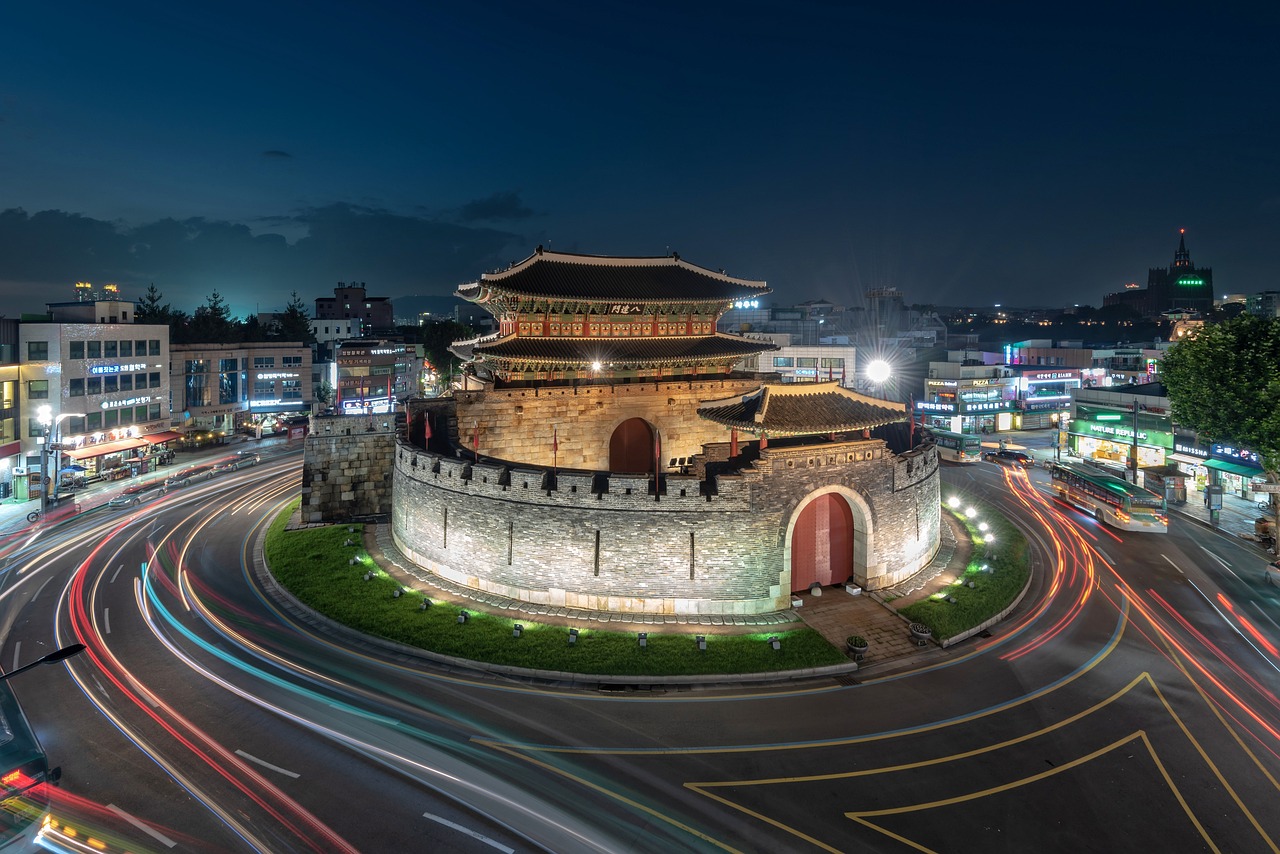
[Critiques and Challenges]
Cultural materialism, while groundbreaking in its approach to understanding the interplay between culture and material conditions, has not been without its critics. One of the primary critiques revolves around its perceived overemphasis on material conditions at the expense of individual agency. Critics argue that by focusing predominantly on the socio-economic environment, cultural materialism risks reducing human experience to mere reactions to external factors, sidelining the complexities of individual motivations and choices. This raises an important question: can we truly understand culture without considering the unique perspectives and actions of individuals?
Another significant challenge comes from the realm of post-structuralism, which posits that meaning is not fixed and that cultural interpretations are fluid and subjective. This perspective highlights the limitations of cultural materialism in addressing the multifaceted nature of culture. For instance, consider how a single cultural artifact, like a song or a film, can evoke vastly different interpretations based on personal experiences, social context, and historical background. Critics argue that cultural materialism may overlook these nuances, leading to a potentially reductive analysis.
Moreover, some scholars suggest that cultural materialism tends to prioritize the economic base over the cultural superstructure, which can lead to a deterministic view of culture. This notion implies that culture is merely a reflection of economic conditions, negating the possibility of culture influencing the economy in return. In this light, the relationship between culture and material conditions is not just a one-way street, but rather a complex, dynamic interplay that requires a more nuanced understanding.
In response to these critiques, proponents of cultural materialism have sought to refine its theoretical framework. They argue for a more balanced approach that incorporates elements of agency and subjectivity, thus acknowledging the role of individuals in shaping cultural narratives. This evolution of thought suggests that rather than viewing culture and material conditions as opposing forces, we should see them as interconnected threads in the fabric of society.
As debates continue within Marxist philosophy, it becomes evident that the challenges facing cultural materialism are not merely obstacles but opportunities for growth and adaptation. Engaging with these critiques can lead to a richer understanding of culture that honors both the material and the subjective dimensions of human experience.
- What is cultural materialism?
Cultural materialism is a theoretical framework that emphasizes the influence of material conditions on cultural practices and beliefs. - Who developed the concept of cultural materialism?
Raymond Williams is credited with developing the concept of cultural materialism, integrating ideas from Marxist philosophy. - What are some critiques of cultural materialism?
Critiques include its focus on material conditions over individual agency and its potential to overlook the fluidity of cultural meanings. - How does cultural materialism relate to contemporary cultural studies?
Cultural materialism remains relevant in discussions about culture, power, and identity, especially in a globalized context.
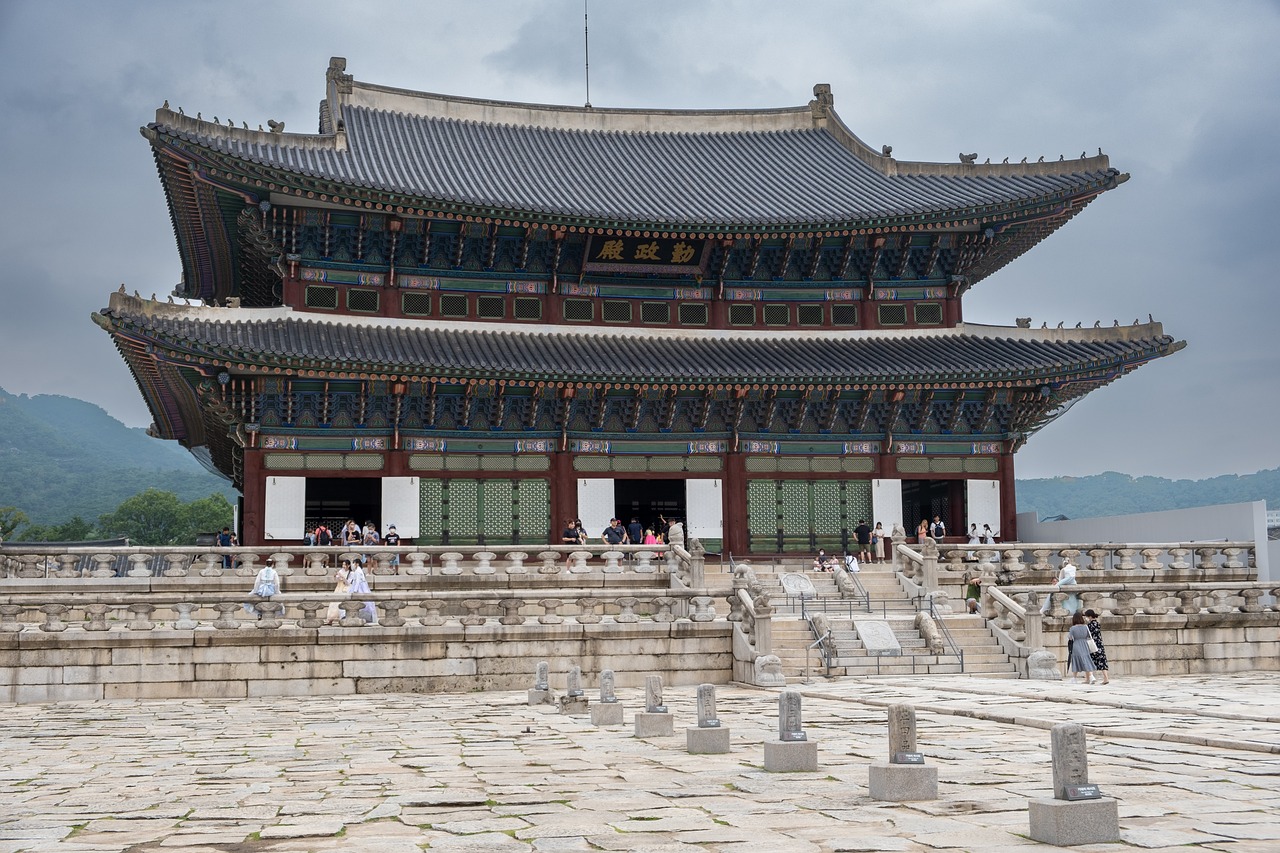
[Responses to Critiques]
In the vibrant landscape of cultural theory, critiques of cultural materialism have sparked significant dialogue and reflection. Critics often argue that this approach places too much emphasis on material conditions, potentially overshadowing the role of individual agency and personal experiences. However, proponents of cultural materialism, particularly those influenced by Raymond Williams, have actively engaged with these critiques, refining their arguments to create a more nuanced understanding of culture and society.
One of the primary responses to critiques is the acknowledgment that while material conditions are crucial, they do not exist in a vacuum. Cultural materialists now emphasize the interplay between material circumstances and human agency. They argue that individuals are not merely passive recipients of cultural influences; instead, they actively engage with, reinterpret, and sometimes resist these influences. This dynamic relationship allows for a more comprehensive understanding of cultural production and consumption, highlighting how individuals navigate and negotiate their identities within the constraints of their material realities.
Moreover, Williams' concept of structures of feeling serves as a valuable tool in addressing these critiques. By focusing on the emotional and experiential dimensions of culture, proponents can illustrate how personal experiences and emotional responses are shaped by, yet also shape, the material conditions of their lives. This reciprocal relationship underscores the importance of individual agency while still recognizing the foundational role of material circumstances.
Additionally, the idea of selective tradition has been reinterpreted to reflect a broader understanding of cultural evolution. Critics often point out that cultural materialism can overlook the complexities of cultural change, especially regarding marginalized or underrepresented voices. In response, cultural materialists now advocate for an inclusive approach that recognizes the contributions of diverse cultural narratives and practices. By doing so, they not only address the critiques but also enrich the theoretical framework, allowing for a more comprehensive analysis of cultural dynamics.
To summarize, the responses to critiques of cultural materialism are characterized by a more integrated approach that acknowledges the significance of both material conditions and individual agency. This evolving dialogue demonstrates the adaptability of Williams' theories and their relevance in contemporary cultural studies. As scholars continue to explore the intersections of culture, power, and identity, the ongoing refinement of cultural materialism promises to contribute valuable insights into our understanding of the complexities of human experience.
- What is cultural materialism?
Cultural materialism is a theoretical framework that emphasizes the material conditions of life as primary influences on cultural practices, as developed by Raymond Williams.
- How does Raymond Williams contribute to Marxist philosophy?
Williams integrates Marxist thought with cultural analysis, focusing on how culture is shaped by economic and social factors, while also acknowledging the role of individual agency.
- What are 'structures of feeling'?
'Structures of feeling' refer to the emotional and experiential dimensions of culture that reflect and shape societal values and relationships.
- How has cultural materialism evolved in response to critiques?
Proponents have refined their arguments to incorporate individual agency and the complexities of cultural change, making the framework more inclusive and dynamic.

[Cultural Materialism in Contemporary Context]
Cultural materialism, as articulated by Raymond Williams, remains a vital lens through which we can analyze contemporary cultural phenomena. In a world increasingly characterized by globalization, digital media, and rapid social change, the principles of cultural materialism provide a framework for understanding how material conditions shape cultural expressions and societal structures. It’s fascinating to consider how Williams' ideas resonate today, especially when we examine the intersection of culture, power, and identity in our modern context.
One of the most striking aspects of cultural materialism is its emphasis on the material conditions of existence. In today’s world, these conditions are not just confined to economic factors but extend to technology, environment, and social structures that influence our daily lives. For instance, the rise of social media platforms has transformed how we communicate, share, and consume culture. This shift raises questions about who controls cultural narratives and how these narratives reflect or resist prevailing power structures.
Moreover, Williams’ concept of structures of feeling is particularly relevant in understanding the emotional responses to contemporary issues such as climate change, social justice movements, and identity politics. These emotional and experiential dimensions are not merely personal but are deeply embedded in the collective consciousness shaped by our material realities. For example, the urgency felt by activists in movements like Black Lives Matter or Fridays for Future is a reflection of the emotional landscapes shaped by systemic inequalities and environmental crises.
In addition, the idea of selective tradition offers insights into how cultural forms are preserved or marginalized. In an age where content is produced and consumed at an unprecedented rate, certain narratives gain prominence while others fade into obscurity. This can be seen in how mainstream media often prioritizes specific cultural representations, which can lead to a homogenization of cultural expressions. Understanding these dynamics allows us to critically engage with the content we consume and advocate for more inclusive representations.
The implications of cultural materialism extend beyond academia; they infiltrate everyday conversations about identity, community, and belonging. As we navigate through diverse cultural landscapes, Williams' work encourages us to interrogate the power dynamics at play. How do our material conditions influence our cultural identities? How do we resist or adapt to these influences? These questions are crucial for fostering a more equitable society.
As we reflect on the contemporary relevance of cultural materialism, it becomes clear that Williams’ insights are not just historical artifacts but living ideas that challenge us to think critically about the world around us. They push us to consider not only the economic and social factors that shape our lives but also the cultural narratives that emerge from these conditions. In this way, cultural materialism continues to be a powerful tool for understanding and engaging with the complexities of modern life.
- What is cultural materialism?
Cultural materialism is a theoretical framework that emphasizes the role of material conditions—such as economic and social factors—in shaping cultural practices and beliefs. - How does Raymond Williams contribute to cultural materialism?
Raymond Williams introduced key concepts such as structures of feeling and selective tradition, which help analyze the relationship between culture and material conditions. - Why is cultural materialism relevant today?
In a rapidly changing world, cultural materialism provides insights into how material realities influence cultural production, identity, and power dynamics. - What are structures of feeling?
Structures of feeling refer to the emotional and experiential dimensions of culture that reflect societal values and relationships.
Frequently Asked Questions
- What is cultural materialism?
Cultural materialism is a theoretical framework that emphasizes the importance of material conditions—like economic and social factors—in shaping cultural practices and beliefs. It suggests that culture is not just a product of ideas but deeply intertwined with the material realities of life.
- How did Raymond Williams contribute to cultural materialism?
Raymond Williams was a pivotal figure in developing cultural materialism. He introduced key concepts such as 'structures of feeling' and 'selective tradition,' which help explain how culture evolves and reflects societal values. His work emphasizes that culture is a dynamic process influenced by various material conditions.
- What does Williams mean by 'structures of feeling'?
'Structures of feeling' refers to the shared values and emotional experiences that shape a community's culture. Williams believed these structures are crucial for understanding how cultural practices emerge and change over time, reflecting the lived experiences of individuals within a society.
- Can cultural materialism accommodate individual agency?
While cultural materialism primarily focuses on material conditions, proponents argue that it can incorporate aspects of individual agency and subjectivity. They suggest that understanding cultural practices also requires examining how individuals navigate and respond to their material circumstances.
- Why is language important in cultural materialism?
Language is a vital component of cultural materialism as it serves as the medium through which culture is expressed and constructed. Williams highlighted the interplay between language and material conditions, suggesting that the way we communicate shapes our cultural understanding and experiences.
- How does selective tradition affect cultural evolution?
Selective tradition refers to the process by which certain cultural forms are preserved while others are marginalized or forgotten. This concept helps us understand how cultural narratives are shaped over time, influencing what is celebrated or critiqued in society, and playing a crucial role in cultural evolution.
- What are some critiques of cultural materialism?
Cultural materialism has faced critiques for its perceived overemphasis on material conditions, potentially downplaying the role of individual agency and subjective experiences. Critics argue that this focus might overlook the complexities of how culture is experienced and produced by individuals.
- How is cultural materialism relevant today?
The relevance of cultural materialism persists in contemporary cultural studies, particularly in discussions about power dynamics, identity, and globalization. Williams' ideas continue to inform debates on how culture interacts with economic and social structures in our increasingly interconnected world.











